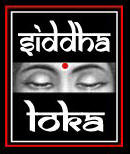|
|
VARNA
Vedic vocations were not related to heredityRather coincidentally, at the dawn of civilization, as the people gathered and lived in clans or tribes (Visha), they collectively - irrespective of their undertakings within Visha (such as in agriculture, woodworking, trade and other vocations) - came to be known as the Vaishaya (meaning - of Visha).
To meet the liturgical and administrative needs of the society, the Vaishaya - from among themselves - would select (based, respectively, on skills in elocution and leadership) Brahmin (student or orator of the Vedas - compiled knowledge) and Kshatariya (tribal chieftain, administrator of Kshatar - dominion or tribal area / town). Furthermore, a Visha (tribe) - in addition to having the Vaishaya (including Brahmins and Kshatariya etc.) - also embodied people known as Shudra (meaning - not of tribe) representing all the newcomers to that particular tribe. They included persons from other tribes (such as the vanquished foes and the migrants from other tribes) and the children born out of inter-tribal unions. Being somewhat new into that tribe and encountering unfamiliar rules, regulations and customs, a Shudra was limited in his vocational options and was generally relegated to providing service and assistance to members of the host tribe. But over time, like a modern day immigrant, he would surpass the tribal or social barriers so as to fully assimilate in that society and pursue other professions.
The importance of a person's skill to satisfy the need of the ancient society can be further elaborated by considering the following in the Rig Veda ( the most ancient Hindu text):
"We all possess various thoughts and plans and diverse are the callings of men. The carpenter seeks out that which is cracked, the physician the ailing, the priest the worshipper.......
"I am a bard, my father is a physician, my mother's job is to grind the corn......
"May they who have attained a life of spirit, the knower of sacrifice, the guileless, help us when called upon...."
Thus, the vocational choice long ago was essentially need-based (personal and tribal) and circumstantial (in terms of availability of labour in a certain place at a certain time, and battles among tribes). It inspired that the societal tasks and responsibilities be dispensed solely in terms of a person's nature or qualifications (Guna) and his active undertaking or assignment (Karma). It was a great vision at work - referred to also in the Gita (Ch. 4) - that is valid even today (for example, the jobs requiring compatibility between the worker's qualifications and the potential assignment.)
Inherently, the above system satisfied one and the all. In this regard, the Gita (Ch. 18) further elaborates that all occupations are important and correspond to various needs or segments of the society. The Gita stresses that, while it is of utmost importance to recognize and adhere to one's own responsibility or the task at hand, there is no other special advantage or basis (in terms of divinity or one's heredity) for pursuing a particular undertaking. It is also stated there that, no matter whatever a person's duty or task, he attains perfection or heavenly bliss only if he is fully dedicated to it and performs it with pleasure and interest as if it were a service to the Lord.


